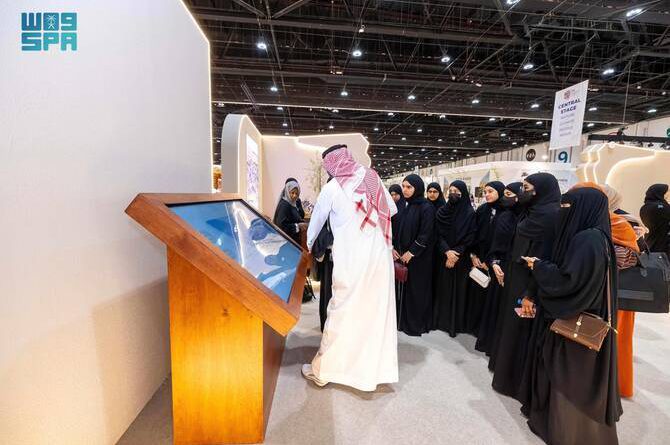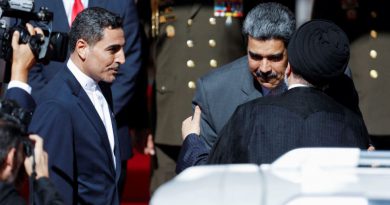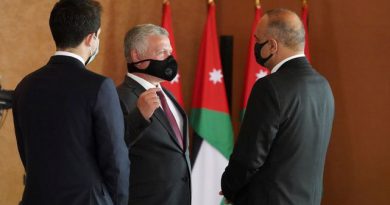KSA Showcases Landmark Conservation Achievements at Global Congress in UAE
Riyadh – Saudi Arabia’s ongoing success in environmental conservation and sustainable development took center stage this week as the Imam Turki bin Abdullah Royal Nature Reserve Development Authority concluded its participation in the IUCN World Conservation Congress held in Abu Dhabi, UAE.
The event brought together global leaders, environmental experts, and organizations dedicated to protecting the planet’s natural heritage, providing an ideal platform for the Kingdom to showcase its remarkable progress under Saudi Vision 2030.
At its vibrant pavilion, the authority presented an inspiring overview of the Kingdom’s accomplishments in biodiversity conservation, vegetation restoration, and sustainable ecotourism.
According to the Saudi Press Agency (SPA), the reserve authority highlighted efforts that have transformed vast areas of the Arabian landscape into thriving ecosystems that balance environmental protection with community and economic development.
The Imam Turki bin Abdullah Royal Nature Reserve, spanning over 91,500 square kilometers, stands as one of the largest protected areas in the Kingdom.
During the congress, the authority shared its impressive record of planting more than 775,000 seedlings, which has resulted in a 9 percent increase in vegetation cover.
These efforts have significantly contributed to combating desertification, restoring natural habitats, and improving overall ecological balance in the region.
One of the highlights of the pavilion was the successful reintroduction of endangered species, including the Arabian oryx, sand gazelle, and red-necked ostrich.
These rewilding programs symbolize the Kingdom’s deep commitment to restoring native wildlife populations and preserving biodiversity for future generations.
Visitors learned how careful planning, habitat protection, and scientific monitoring have allowed these majestic animals to thrive once again in their natural environments.
The pavilion’s design itself reflected Saudi Arabia’s forward-thinking approach to conservation. It featured interactive displays of plant and soil models, along with cutting-edge field monitoring devices that demonstrate how technology is being used to track vegetation cover and ecosystem health.
The immersive setup allowed visitors to experience the unique environmental diversity of the reserve, showcasing the seamless integration of science, culture, and sustainability.
Beyond ecology, the authority’s participation emphasized the social and economic dimensions of conservation. The pavilion highlighted projects that empower local communities through ecotourism, environmental education, and sustainable livelihoods.
These initiatives not only create jobs and foster economic growth but also cultivate a stronger sense of environmental stewardship among residents.
Visitors were particularly impressed by the tourism-focused exhibits, which showcased how the reserve is becoming a model for eco-friendly travel. Through guided nature trails, wildlife observation areas, and cultural heritage programs, the reserve invites both domestic and international visitors to explore Saudi Arabia’s natural beauty responsibly.
This approach reflects the country’s broader goal of promoting tourism that supports conservation while celebrating the Kingdom’s environmental and cultural heritage.
Delegations and guests from around the world praised the Kingdom’s achievements, describing the Saudi pavilion as one of the most engaging and informative exhibits at the congress.
It highlighted how the Kingdom’s conservation policies align with global sustainability goals, demonstrating that economic growth and environmental preservation can go hand in hand.
The IUCN World Conservation Congress, which began on October 9 and concludes on Wednesday, serves as one of the most important global gatherings for environmental leadership and innovation. By actively participating in the event, Saudi Arabia reaffirmed its position as a regional leader in environmental protection and biodiversity management.
In a statement, the authority emphasized that these achievements are part of the Kingdom’s broader strategy to enhance natural resource sustainability, in line with Vision 2030’s Green Saudi and Green Middle East initiatives.
These national programs aim to increase green spaces, combat climate change, and safeguard biodiversity through large-scale environmental projects.
As the congress draws to a close, Saudi Arabia’s participation stands as a proud reflection of the Kingdom’s commitment to building a greener, more sustainable future.
Through innovation, collaboration, and unwavering dedication to conservation, the Imam Turki bin Abdullah Royal Nature Reserve has become a beacon of environmental progress — embodying the harmony between nature, people, and prosperity that defines the next era of Saudi environmental leadership.



